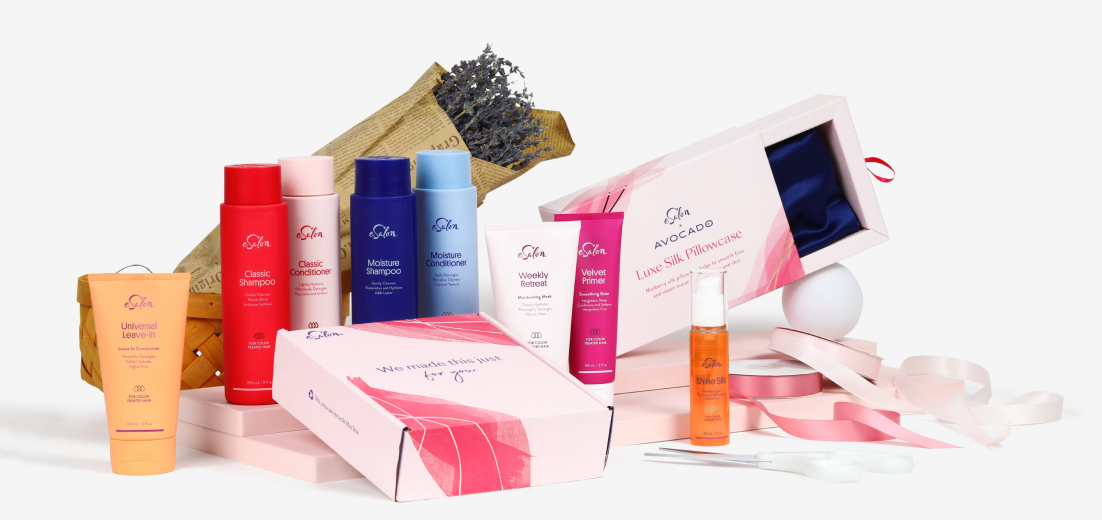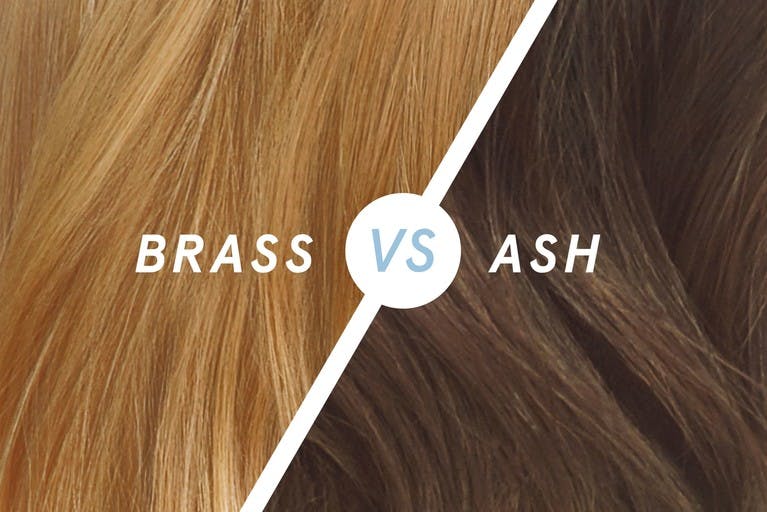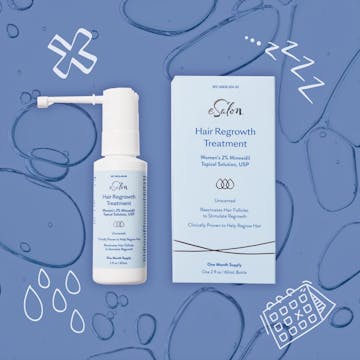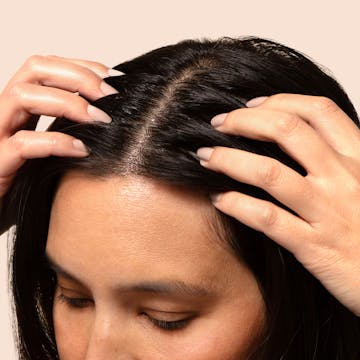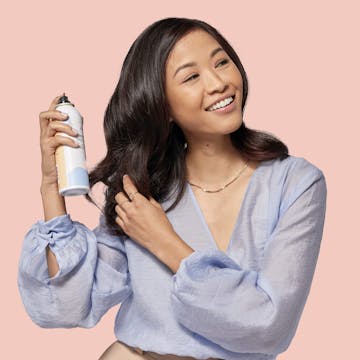Brass & Ash Hair Color 101: Everything You Need to Know
Both brass and ash are two polar-opposite tones in hair color. Learn all about what these hair colors are, how to use them to your color’s advantage, and how to correct them when they’re unwanted. So let’s pull back the curtain and dive in.
BRASS 101
Q: When it comes to hair color, what does “brass” mean?
A: Brass is a word we use for warm tones like red and orange, that are typically most visible when you lighten your hair. When we’re looking at roots, brassy or “hot” roots can happen when your hair color lifts (or lightens) but never quite gets past the point of achieving the correct color. Anyone remember bleaching their hair as a teenager and not getting blonde but super-bright orange hair instead? It happens, but not if you know how to do it right.
Lifting the hair to get past super-warm layers means you’ll need to lift your natural undertones. We see brassy roots most often when people are lifting their color further than they can really go in one application, or without a strong enough color treatment. Even when you see celebrities going from dark to platinum (what seems like) overnight, that’s actually an entire day process.
When we’re talking about brassiness on the length of hair, it can come through as your color oxidizes in the sun, through heat styling, and when you use harsh color treatments. Oxidation is basically when the hair’s cuticle opens up, and you slowly start to lose molecules of color. Once you lose those molecules of color, you’re left with those naturally underlying pigments that end up looking warm, golden, or red.
Q: What are other words commonly used in the hair color world to describe brass?
A: The most common words used to describe brass are warm, golden, red, yellow, caramel, buttery, and unfinished. We often have clients refer to unwanted brassy tones in their hair that they’re looking to neutralize or balance with a complementing tone. For example, a shampoo with purple pigments can help offset unwanted tones in blonde hair and blonde highlights or a blue-pigmented shampoo may help neutralize warm tones in color-treated brown hair.
Q: Is brass a bad thing?
A: The word “brass” has a bad rap, however, brass isn’t necessarily a bad thing. A lot of people use the word brass when describing unwanted warmth in their hair color. Typically, if a client wants a more golden tone, they will say something like, “I want a warmer shade” or “ a buttery shade”—it’s not often that we hear folks say, “I want more brass” even though these descriptions all mean the same thing. If you’re looking for warmth, then a little brass isn’t a “bad thing”—it’s only a bad thing when you don’t want warmth! It’s all a matter of preference to find the right shade for you.
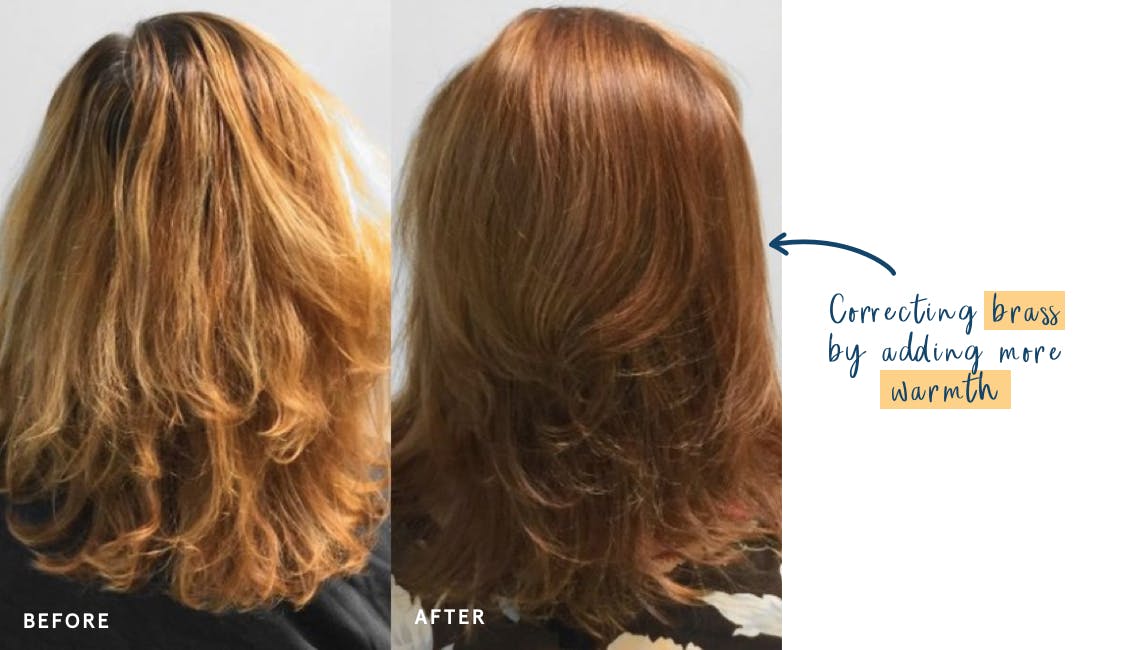
Q: For those who don’t want brassy hair color, is it hard to fix?
A: No, brassy hair is usually a pretty quick fix. Depending on the length of your hair you can use a shampoo or conditioning product that counteracts brass, like our Tint Rinse or Toning Mask, fortified with purple pigments. And if you haven't refreshed your ends in a while, using a second bottle of hair color to add pigment back into your hair can help fix that brassiness. To avoid seeing brassiness at your roots, ask for a slightly lighter neutral color when you’re ready to touch up your look or try a new color. Once your colorist knows what you like and don’t, they can easily help you avoid brass at home.
Q: What does counteract mean?
A: Counteracting brass means using the opposite tone on the color wheel to neutralize that shade, and get you the finish you want. For example, using blue or purple helps counteract brassy tones for blonde hair colors. During your color formulation, your colorist will use these neutralizers to help tone down or “counteract” any unwanted brass. Think of it like how opposites attract, and essentially balance each other out.
Q: How can you avoid brassy hair?
A: There are a ton of ways you can cool down overly warm, brassy tones in your hair color––no one wants hot roots. Before you use hair dye, make sure your colorist is formulating the right shade for you, so you’re not seeing too much brass. The easiest way to avoid brass altogether is to simply go darker, since adding deeper pigments to your hair can cover those too-warm tones. Also, not taking too much time in between touch-ups so that your ends don’t oxidize can help you maintain a more balanced shade. Oxygen is great for, you know, breathing, but not so much for your hair color.
You want to make sure you’re not trying to go too light too fast when you do decide to change to a new color. Why? Going too light too fast means that instead of slowly stripping red tones from your hair color, you’ve exposed those too-warm tones by not lifting enough. And finally, you can balance any unwanted brassy tones by adding a color-safe shampoo and conditioner combo to your routine. Bonus: they make your color last a lot longer and keep it vibrant.
ASH 101
Q: When it comes to hair color, what does “ash” mean?
A: Ash looks like a grayish-blue kind of tone. It’s just a little bit of an additive in your color made to cool down your hair—mostly your roots—like a hair toner. People don’t want an ashy hair color throughout all of their strands, because the finish is more matte. However, when it’s combined with a warm tone, like a beige or ash-cooper, we get this nice balance of warm and cool tones. (Psst...check out the example further down to see what we mean.)
Ash in our color line is dealt with a bit differently than most color lines. We use ash as an actual tone instead of just as a neutralizer. Other brands typically use ash as a hair toner or to add cool warmth, whereas we use colors like violet and blue to help tone and dilute a shade to give you dimension. These little unique differences make your color more playful, and well...you.
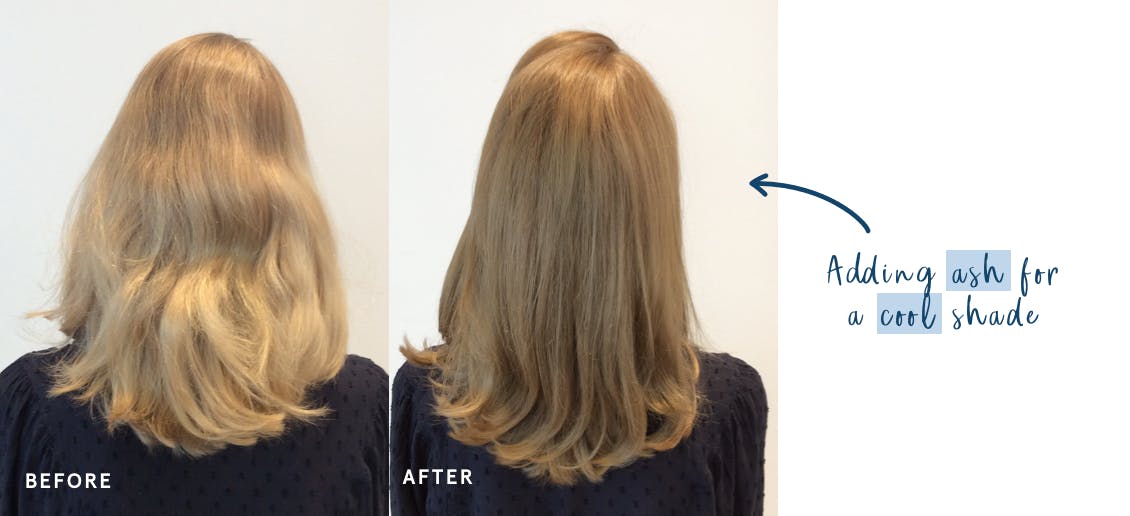
Q: What are other words commonly used in the hair color world to describe ash?
A: We commonly refer to ash tones as cool or neutralizing.
Q: Is ash a bad thing?
A: No, definitely not. Ash is one of those tones that can be extremely helpful when used the right way. On its own, it’s not the most flattering shade, but when formulated into or as part of a warmer base hair color, it can be beautiful—unless you have platinum blonde hair and want to go gray (we’re all for it).
If you have dyed, platinum blonde hair and you add a pure ash color to it, it would almost look silver. Adding ash to platinum blonde shades cuts out all the warmth to give you a silver-vixen look—which can be gorgeous if that’s what you’re going for.
Q: For folks who don’t want ashy hair color, is it hard to fix?
A: It’s super easy to fix. When formulating your shade, your colorist will likely use a copper or golden tone to counteract the ash. You can also use a pigmented rinse like our Tint Rinse to add warmth temporarily.
This process is essentially the exact opposite of the way you would treat brassiness and is probably easier to fix. Why? Because to fix ash, you’re simply depositing color to cover it up. A lot of the time with brassy shades, you need to lift a bit further, which can be difficult to achieve depending on the current level of your hair color. With ashy shades, you’re just adding warmth, and hair is typically more receptive to ash.

Q: How do you avoid ashy hair?
A: If you don’t want ashy hair, try to stay away from cool tones like violet, blue, or matte shades like green. Try to stay in the neutral to golden spectrum which can also give you some sparkle in the sun. If you’re wanting to maintain a shade that doesn't fall flat, definitely using a second bottle of color to revive and revitalize your hair will keep it from looking too ashy.
Now you have the facts about brass and ash from the pros, so you know exactly what to ask your colorist for. Have more hair color questions? Check out our social pages on Instagram, Facebook, Pinterest, and Twitter.
